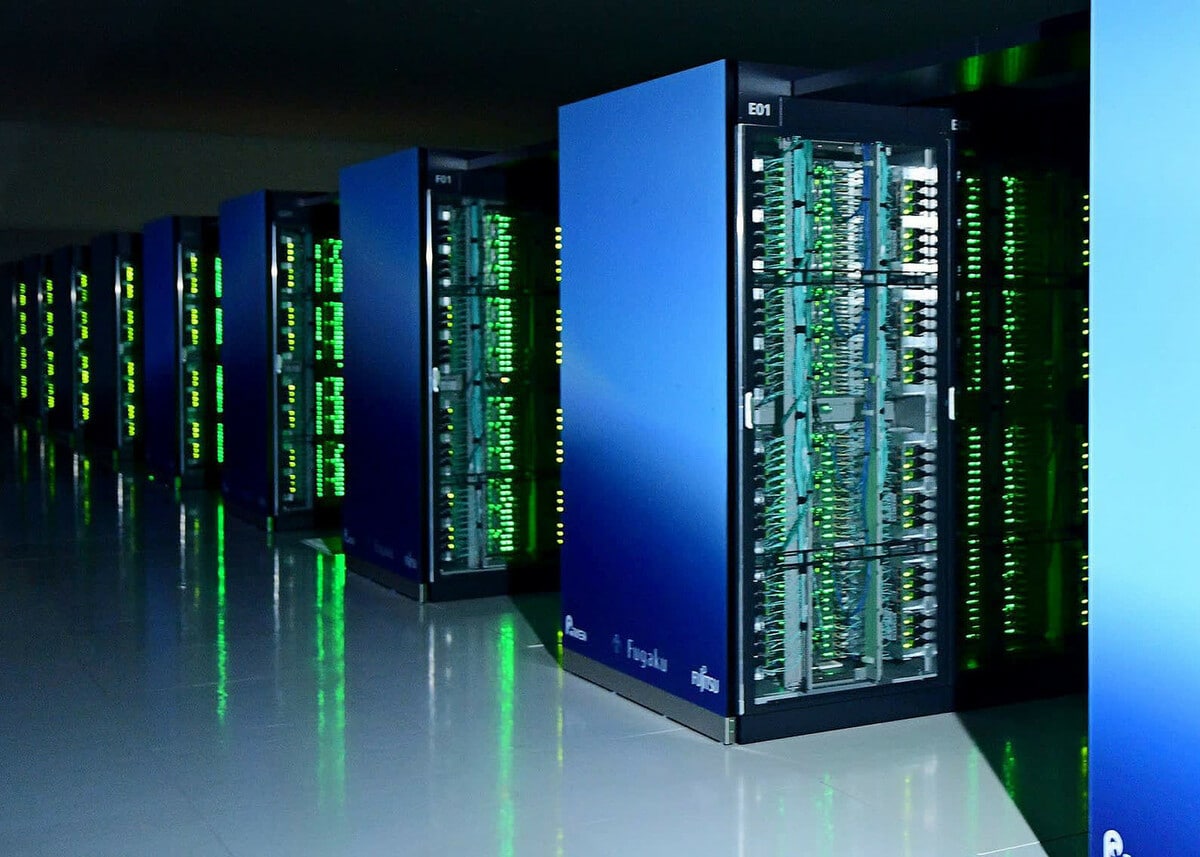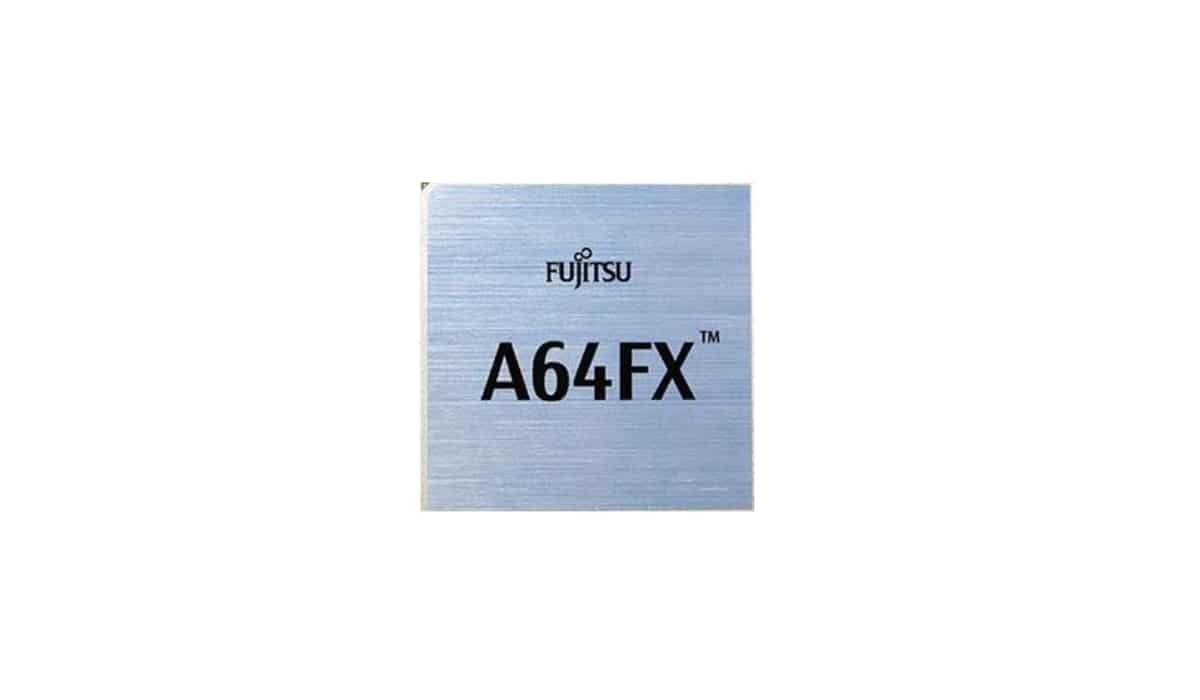
If you were told a few years ago that a supercomputer with chips based on the ISA ARM they were going to occupy the first position of the TOP500 (list of the 500 most powerful supercomputers in the world), the laughter and laughter would have been loud. Nobody imagined that an architecture that was practically not used would get there.
Little by little, ARM chips have been gaining ground, conquering the field of mobile devices for their efficiency and performance, as well as many other embedded products. But a few years ago they began to create some servers with ARM low consumption, and began to flirt with this ISA in the HPC (High Performance Computing) sector.
The news that jumped recently about that Apple abandons Intel To create its own ARM-based chips was important, for all that it entailed, but it went almost unnoticed by other, much more important news. And it is that an ARM supercomputer could beat the performance of the IBM Summit and conquer the first position of the Top500 list. For the first time an ARM reaches so high, and that has meant a before and after ...
Going back to Apple, it seemed strange that an ARM chip could surpass Intel in efficiency and performance, but Apple has proposed it and will be able to make very interesting designs. Intel is getting more and more complicated, and not just because of the competition from AMD ...
The supercomputer

But what you would never imagine a long time ago is that can also be crowned at the HPC. Do you want to know more details? Well, on the Top500 list for June 2020, the top performance spot is held by the Japanese supercomputer Fugaku. A supercomputer based on 64Ghz Fujitsu A48FX 2.2C chips, of which it incorporates 7.299.072 processing cores to add a beast of floating point computing performance.
Specifically reaches 415,5 PFLOPS (that is, 415.500.000.000.000.000 calculation operations with decimals per second) and will be used for research against SARS-CoV-2, among other things.
It is installed at the RIKEN Computing Center in Kobe, Japan. In this data center their more than 150K nodes of which it is composed, interconnected through a high-speed Tofu Interconect D network to link the ARMv8.2-A SVE chips of 52 cores per node.
Also use the memory high-bandwidth HBM2 with a capacity of 32 GiB per node. Storage wise, it has 1.6 TB NVMe shared per 16 nodes, as well as 150 PB Shared FS, and additional cloud storage service.
As operating system use linux, specifically the RHEL 8 distribution, as well as an IHK / McKernel simultaneously. All performance simulations were measured under McKernel, although Linux is present to provide the rest of POSIX services.
The chip

The processing beast that has yielded those figures is quite "humble." It is a chip created by Fujitsu. It's called A64FX and it is a microprocessor based on the ARM 8.2A architecture, also adopting SVE (Scalable Vector Extensions), additional extensions to that base ISA to achieve better calculation results.
The A64FX that has Fujitsu designed it thus replaces its previous SPARC-based HPC chips. And they have not only set a milestone for taking the Fugaku to the top of the Top500, but also for being the first to support 512-bit SIMD EVS.
These chips have been manufactured in TSMC factories, the same where they manufacture the Zen of AMD, and the same where they will manufacture the future chip of Europe. The technology they have used 7nm technology to build their 8.786.000.000 transistors. All of that in a small chip that only needs 594 pins.
Additionally, each processor uses 32GB of HBM2 memory with a 1TB / s bandwidth, with 16 lanes or PCIx lanes per processor to connect them with accelerators, such as GPGPUs and FPGAs.
Lastly, works at 2.2 Ghz and enough packages have been added to complete that figure of almost 7.3 million cores and almost 5 PB of memory.
The level of processing that has been achieved and the future practical applications that this will entail is incredible. Right now, when I am putting this comment on your wonderful page, the chip that my desktop computer uses is an Intel. This PC is 8 years old, but I still hope it lasts at least 2 more years, more than enough time for all these supercomputing advances to be carried not only to the field of Companies but also to the domestic environment.
I am 61 years old and when the RISC processors began to have problems, because they were manufactured by relatively small companies and little marketing; He always said that one day his luck could change and this could be his great opportunity
I will have to give the Rasperry Pi to be in style with ARM.
Impressive machine, let's hope that the use in the modeling of the Covid in this supercomputer will deliver results.
If possible, I would like a comparison of the power of this processor with the commercials. Even if it's from dividing petaflops. Over 500 Gbflops are the Ryzen 3600 or i510600. 415,5 PFLOPS / 150k nodes ~ = 415.500.000.000.000 / 150 = 2.770.000.000.000 => 2.770 gigaflops per node.
415.500.000.000.000 / 150
That is, more than x5 of the current best-selling consumer X86 processors.
Which implies that ARM personal computers could be offered with GNU - or Chromebooks - more powerful - and probably cheaper - than the X86 alternatives.
If I work at Valve, I would already be creating a version of Steam for arm - chromebooks already exist - even wondering if I could make a good, nice and cheap Steam Machine with that processor or a somewhat cheaper version.
GIGA 9 / TERA 12 / PETA 15 (zeros)
In its day, AMD "put Intel in deep trouble." Transmeta and his Crusoe also seemed to be putting Intel in "serious trouble." And not so long ago, the PowerPCs were the lemon pear and Intel was going to disappear (Maquero discourse that changed as if it had never existed when Apple switched to the Pentium).
Everyone seems to forget that:
1. Intel has the best semiconductor foundation in the world.
2. Intel can afford the best engineers in the world.
3. Intel has ARM licenses in a drawer. Any day you feel like it, you can bundle up to make even higher quality ARMs than what is being made today and get a lot of money. And if you need it, you will buy the necessary licenses.
So no, we will have Intel for a while.
Correct. My little heart is blue ... I vote for Intel.